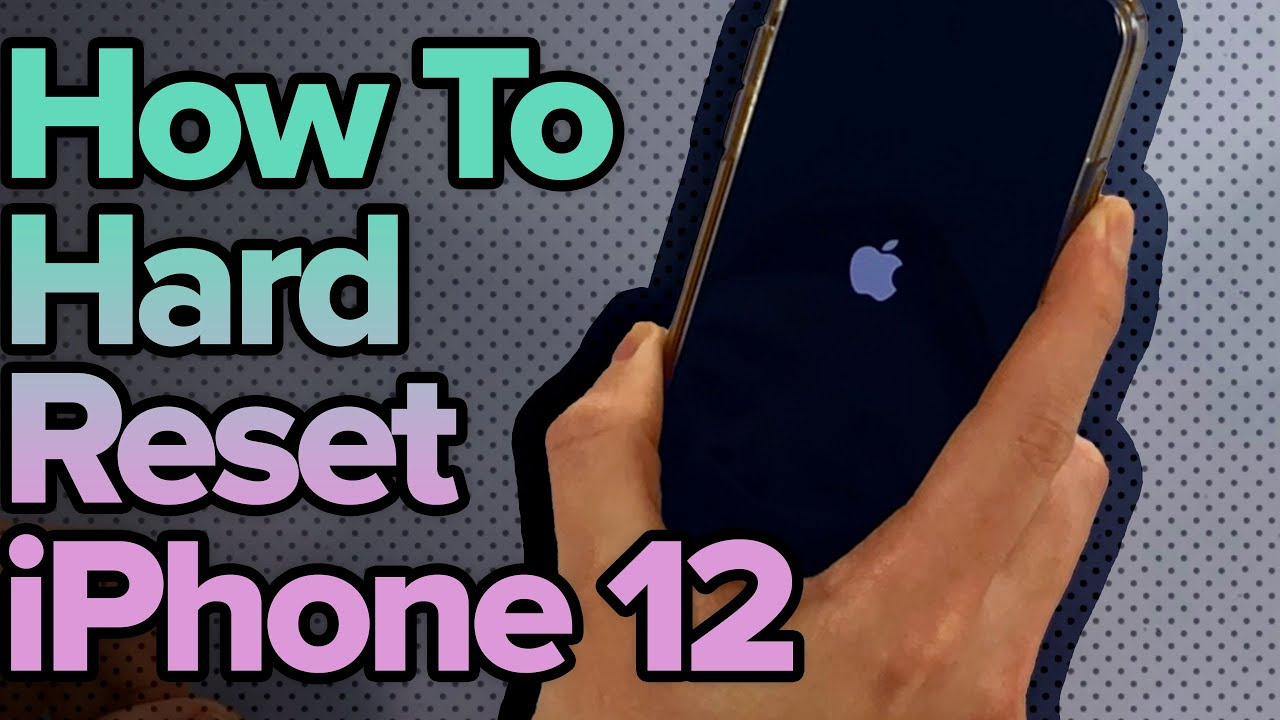It’s not unusual to encounter situations where your iPhone 12 isn’t functioning as expected. Maybe it’s become unresponsive, is suffering from software glitches, or is simply in need of a fresh start. Often, the first troubleshooting step is to reset or restart your device. While the terms “reset” and “restart” are used interchangeably, their implications on your phone’s data and settings differ. Don’t worry; you don’t need to be a tech wizard to perform these operations. In the coming sections, we’ll guide you through various methods to safely restart or reset your iPhone 12, helping to resolve issues and refresh its performance.

Force Restart
Occasionally, your iPhone 12 may freeze or become unresponsive. A force restart is a quick fix that can often bring your phone back to life without affecting any of your data.
- Press and then release the Volume Up button.
- Immediately press and then release the Volume Down button.
- Press and hold the Side button until you see the Apple logo, then release the button.
This process can feel like performing a special tech move, but you’re really just jumpstarting your phone. Your data remains untouched, but any temporary glitches are often resolved. If your phone was frozen on a screen, the force restart should clear that up.
Soft Reset
A soft reset is like turning your iPhone 12 off and back on again. It can resolve minor software issues and is harmless to your data.
- Press and hold the Side or Top button until “slide to power off” appears.
- Drag the slider to turn your device completely off.
- After the device turns off, press and hold the Side or Top button again until you see the Apple logo.
The soft reset is simple and can be likened to turning off a light switch to reset the lighting in a room. It’s particularly beneficial as it clears the phone’s memory (RAM), but it won’t remove any personal data or change your settings.
Check for Software Updates
Updating your iPhone’s software can resolve existing issues and provide new features and security improvements.
- Open Settings and tap on ‘General.’
- Tap on ‘Software Update.’
- If an update is available, tap ‘Download and Install.’
Software updates bring a multitude of benefits, such as new features, bug fixes, and security patches. However, ensure you’re connected to Wi-Fi to avoid using your mobile data for the download.
Reset All Settings
If you’re experiencing persistent issues, resetting all settings to factory defaults can help without erasing your data.
- Open Settings and tap ‘General.’
- Scroll down and tap ‘Reset.’
- Tap ‘Reset All Settings’ and enter your passcode if prompted.
This action keeps your files and data but restores all settings to their original state. It’s like giving your iPhone a fresh start regarding preferences and configurations.
Erase All Content and Settings
For a clean slate, you might consider erasing all content and settings. This will delete everything and return your phone to its original state.
- Open Settings and tap ‘General.’
- Scroll to and tap ‘Reset.’
- An iPhone may sometimes experience glitches or errors that don’t seem to go away. In such cases, it can be necessary to erase all content and settings to give your iPhone a fresh start. Tap ‘Erase All Content and Settings’ and enter your passcode if prompted.
- Follow the on-screen instructions to complete the reset.
This is the nuclear option but can be a powerful solution if you’re preparing to sell the device or have encountered irreparable software issues. Remember, this will remove all personal data, so ensure you have a backup first.
Restore from Backup
If you’ve tried everything else, restoring your iPhone from a backup can be the next step.
- Ensure you have a recent backup in iCloud or on your computer.
- Go to Settings, tap ‘General,’ then ‘Reset.’
- Tap ‘Erase All Content and Settings.’
- Set up your iPhone again and choose to restore from iCloud or iTunes/Finder backup.
Restoring from a backup can solve deeper issues, returning your phone to a state where it was operating smoothly.
Background App Refresh
Sometimes, the apps on your iPhone 12 might cause performance issues due to background activity. Adjusting these settings can help.
- Open Settings and tap ‘General.’
- Tap on ‘Background App Refresh.’
- From here, you can turn off the feature entirely or select which apps can refresh in the background.
By tweaking these settings, you may save battery life and improve performance, but some apps might not update content in the background as expected.
Battery Health Check
Poor battery health can affect your iPhone’s performance. Check the battery’s health and consider saving power.
- Open Settings and tap ‘Battery.’
- Tap on ‘Battery Health.’
- Review the Maximum Capacity and Peak Performance Capability information.
Understanding your battery’s health helps in deciding if a replacement is needed, potentially improving performance if current health is low.
iPhone Storage Management
If your iPhone 12 is running low on storage, it could slow down or have trouble updating apps and the OS.
- Open Settings and tap ‘General.’
- Tap ‘iPhone Storage.’ Here, you can see what’s taking up space and act accordingly.
Managing storage by deleting unused apps or offloading large files can speed up your phone and resolve issues related to storage constraints.
Network Settings Reset
Network issues can sometimes cause problems with connectivity and app function.
- Open Settings and tap ‘General.’
- Scroll down and tap ‘Reset.’
- Tap ‘Reset Network Settings’ and enter your passcode if prompted.
This will reset all network settings, including Wi-Fi passwords, VPN settings, and cellular configurations.
In conclusion, whether you’re dealing with a minor glitch or serious software issues, these steps provide a comprehensive guide to resetting and restarting your iPhone 12. By starting with the least invasive resets and progressing to more drastic measures as needed, you can often troubleshoot without losing your data. Remember that some steps, like erasing all content and settings, are irreversible, so always ensure your data is backed up before proceeding.
FAQs:
-
Will a force restart delete any of my personal data on the iPhone 12?
No, a force restart does not affect your personal data. It simply reboots the system if it becomes unresponsive. -
How often should I perform a soft reset on my iPhone 12?
A soft reset can be done as needed, typically when you notice your phone is running slower than usual or when apps are not functioning correctly. -
What happens if my iPhone 12 still has issues after a hard reset?
If issues persist after a hard reset, you may need to restore your iPhone from a backup or seek help from Apple Support for potential hardware problems.









